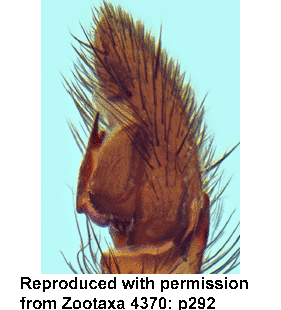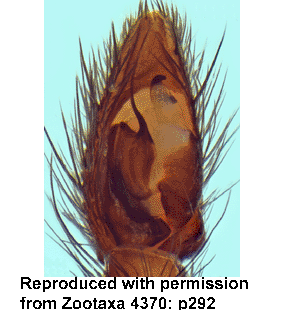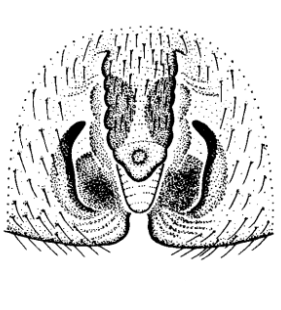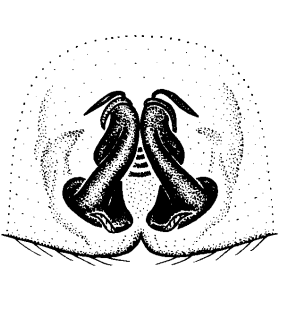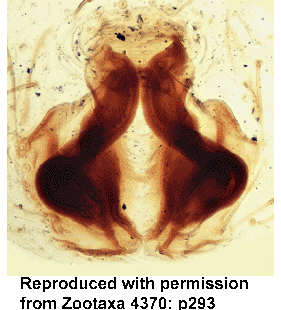Gnaphosa alpica Simon, 1878
Beschreibung
Tibialapophyse lang. Epigyne mit leistenartigen, hervorstehenden Ecken am Hinterrand. Vulva rötlichbraun. Femur orange. Tarsus dunkler.
Körperlänge Männchen: 8-9 mmKörperlänge Weibchen: 8-9.2 mm
Verbreitung
Abbildungen
Verbreitungsnachweise
"No reference" bedeutet nicht, dass die Art in diesem Land nicht vorkommt, sondern dass wir die Referenz hierfür noch nicht eingefügt haben. Wir arbeiten daran.
Literatur
Danflous S, Crowther R, Simmons Z M (2020a) Identité de Gnaphosa molesta / Identity of Gnaphosa molesta (Araneae; Gnaphosidae). Bulletin de l'Association Française d'Arachnologie 5: 2-9 ![]()
Danflous S, Déjean S, Guerbaa K, Jacquet C, Lecigne S, Montagne D, Montardi Y, Villepoux O (2020b) De araneis Galliae IV. Actualisation du référentiel des araignées de France – première note. Espèces absentes de France ou mises en nomen dubium. Bulletin de l'Association Française d'Arachnologie 5: 10-32 ![]()
Le Peru B (2007) Catalogue et répartition des araignées de France. Revue Arachnologique 16: 1-468 ![]()
Ovtsharenko V I, Platnick N I, Song D X (1992) A review of the North Asian ground spiders of the genus Gnaphosa (Araneae, Gnaphosidae). Bulletin of the American Museum of Natural History 212: 1-88 ![]()
Pantini P, Isaia M (2019) Araneae.it: the online catalog of Italian spiders, with addenda on other arachnid orders occurring in Italy (Arachnida: Araneae, Opiliones, Palpigradi, Pseudoscorpionida, Scorpiones, Solifugae). Fragmenta Entomologica 51: 127-152 ![]()
Řezáč M, Růžička V, Oger P, Řezáčová V (2018a) European species of the Gnaphosa alpica complex (Araneae, Gnaphosidae). Zootaxa 4370: 289-294 ![]()
WSC (2024) World Spider Catalog. Version 25.0. Natural History Museum Bern, online at http://wsc.nmbe.ch (22.01.2024) doi: 10.24436/2 ![]()

